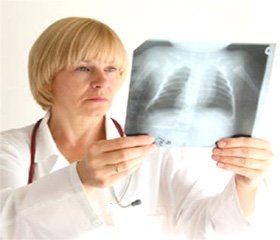Журнал «Здоровье ребенка» 3 (54) 2014
Вернуться к номеру
Sequential therapy of community acquired pneumonia in children
Авторы: Karimdzhanov I.A., Iskanova G.H., Israilova N.A. - Tashkent Medical Academy (Uzbekistan)
Рубрики: Педиатрия/Неонатология
Разделы: Клинические исследования
Версия для печати
community-acquired pneumonia, sequential therapy, oral cephalosporins
Introduction. Etiological therapy of acute community-aсquired pneumonia in children is an urgent issue to up-to-date pediatrics. Cephalosporins take the leading place among antibiotics used in clinical practice, they have a wide antimicrobial spectrum, bactericide effect, low frequency microorganism resistance, well-tolerated with lower incidence of side effects and also simple and easy-to-use in their dosing [ 1,4, 5]. Today, an important principle of treating various infections is the method of sequential therapy. Sequential therapy - a two-stage application of antibacterial drugs with the transition from parenteral to oral administration as soon as possible, taking into account the clinical condition of the patient and the severity of coincidence spectrum of their antimicrobial action. Sequential therapy reduces the duration of parenteral administration, duration of clinic stay keeping clinical effect, significantly reduces the expenses for treatment and cost of treatment [2, 3, 5].
The aim is to study the efficiency of sequential therapy of oral and injection forms of cephalosporins II generation cefuroxime and cefprozil in children with acute community-acquired pneumonia.
Materials and methods. It was examined 53 patients between 6 months to14 years old with acute community-acquired pneumonia. Patients were divided into 2 groups. 1 group included 26 patients treated with cefuroxime sodium intramuscularly, and 2 group comprised 27 patients treated with cefuroxime sodium the first 3 days and then since the 4th day - cefprozil suspension orally.
Both groups of patients were compared by forms and the course of pneumonia. In the clinic all patients were conducted clinical and laboratory investigations. The diagnosis was made on the basis of anamnesis, clinical signs and laboratory data, which included (common blood count, urine test, ALT, AST, urea) and chest X-ray before and during treatment. Complex therapy did not differ in both groups of children and included bed rest, nutrition by age, all patients except antibiotic therapy received infusion therapy, antipyretic, expectorant drugs, vitamins, physiotherapy.Please help Google Translate improve quality for your language here. The treatment efficacy was estimated in dynamics. When compared the efficiency of two antibiotic regimens cefuroxime sodium parenterally and cefprozil sequentially orally no differences revealed in the dynamics of clinical course, laboratory and radiological data.The treatment duration was on the average 8,2±0,5 days and determined stable normalization of body temperature, positive clinic-radiological dynamics.
Results. Study results which conducted before treatment showed that 18 (69,2 %) patients of group 1 and 19 (70,4 %) patients of groups 2 had temperature, loss of appetite, sleep disturbance. In 19 (73,1 %) and 21 (78,1 %) patients of groups 1 and 2 were observed cough, in 6 (23,1 %) and 7 (25,9 %) patients had shortness of breath. In 11 (42,3 %) patients of 1 group and 12 (44,4 %) patients of 2 groups were observed tachycardia and muffled tones of heart. On evaluation of the therapy effect in 24 (92,3 %) patients of group 1 and in 25 (92,6 %) patients of group 2 after 3-4 days of initial treatment there revealed positive dynamics of clinical course of the disease: decreased manifestation of intoxication syndrome, body temperature returned to normal or decreased up to subfebrile values, increased appetite, low fatigue, malaise, children became active and therefore antibiotics assigned empirically continued. The loss of cough, dyspnea, and normalization of physical changes in the lungs were observed in both groups at average on 7-10 day of treatment. After 8-10 days of treatment there noted positive changes in hematological parameters: white blood cell count decreased and was mean 7,1 ± 0,9/L·109, erythrocytes sedimentation rate decreased in 4,7 ± 1,5mm/h, indicators of hepar ferments and urea, urinalysis within observation period in both groups were normal. Control of chest X-ray examination carried out on 10-12 day of therapy showed complete disappearance of the focus of pneumonic infiltration in lungs in 21 (80,7 %) patients of group 1 and in 22 (81,5 %) patients of group 2, the rest of patients of both groups had the infiltration decreased in their size. The patients of group 2 received injection of cefuroxime two times less (mean 12,5) than the patients of 1 group (mean 26). All children tolerated cefuroxime and cefprozil well, no adverse reaction observed.
Conclusion.
1. Sequential therapy for acute community-acquired pneumonia in children with cephalosporins of II generation is sufficiently an effective method.
2. The method is safe, without adverse effects, sparing, comfortable for patients and medical stuff both and can be recommended as an initial empirical antibiotic therapy in the treatment for community-acquired pneumonia in children.
1. Abaturov A.E., O. Gerasimenko Cephalosporins for oral use in the treatment of uncomplicated pneumonia in children / / Contemporary Pediatrics. - 2006. - № 4. - S. 56-58
2. Beloborodova N.V., Proshin V.A., Kulikova L.A. Sequential therapy: a promising anti-bacterial treatment in pediatrics / / Attending vrac. 2001. - № 10. - C.1-3
3. Volosovets A.P., Krivopuskov S.P. Oral cephalosporins in the practice of modern pediatrics / / Contemporary Pediatrics. - 2009. - № 5. - Pp. 81-86
4.Israilova N.A. Clinical diagnostic criteria for carditis in acute pneumonia in children of different age / / Physician aspirant. 2011. № 3-4 (46). - S.587-593
5. Practical guidance on anti-infective chemotherapy / / ed. Stratchounski L.S., Belousov Y.B., Kozlov S.N. - M.: Borges, 2002.
6. Yulish E.I., Soroka J.A., Levchenko S.A.Approaches to optimize antibiotic therapy of community-acquired pneumonia in children / / Child Health. - 2007. - № 4. - P.29-32
7. Caimmi S., Galera C., Bousquet-Rouanet L.et al. Safety of Cefuroxime as an Alternative in Patients with a Proven Hypersensitivity to Penicillins / / A DAHD Cohort Survey. - Int Arch Allergy Immunol. - 2010. - 153 (1) . - R.53-60

